Today we’re closing our eyes and traveling to Apulia, the region firmly in the heel of Italy’s boot! Thousand-year-old olive trees surround us, and the air is fragrant with sage and laurel. Many Italians consider Apulia’s cuisine the best in the country. Famous for its fresh vegetables, delectable fish, and pure olive oil, it is also the birthplace of a very original type of pasta.
Orecchiette means “little ears,” and if you know this type of pasta you’ll understand why. The shape does in fact look like a small ear, which it turns out is ideal for absorbing sauce and creating the base for many outstanding dishes.
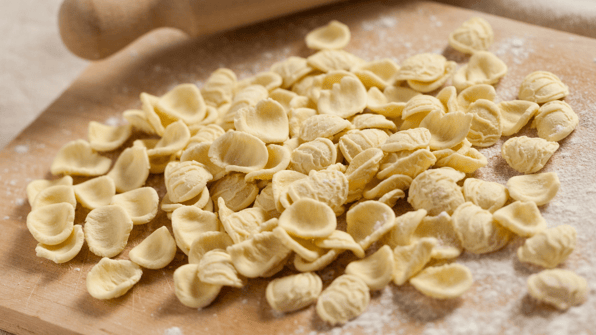
When we talk about foods that have been around for hundreds of years, the origin stories are not always exact and often based on passed down stories, anecdotes, and recipes. Nonetheless, it’s generally thought that orecchiette emerged in the 12th or 13th century. A document from 1500 found in a church in Bari details a baker arranging his daughter’s marriage dowry and includes his orecchiette recipe.
Some people think it might go back earlier. In ancient Rome, there is mention of pasta shaped like orecchiette called lixula, and during Norman-Swabian rule in the 8th century, the rooftops common at the time look very similar to the round pasta. Orecchiette’s shape might also have been inspired by Hamantaschen, the stuffed pastry pockets made during the Jewish celebration of Purim. Others believe that the pasta was influenced by the Angevins arriving from Provence and sharing a technique of rolling a simple dough under their thumbs.
Besides orecchiette being an ideal form to soak up sauce, it likely has remained a staple of the region for centuries due to the simplicity yet durability of its ingredients. The wheat from the region makes a thick pasta that easily dries and can be preserved, meaning it could withstand periods of war, plague, and famine.
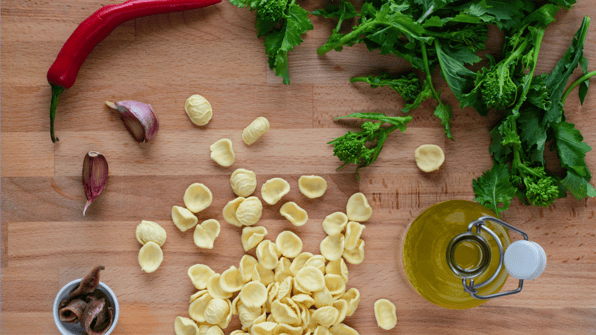
Traditionally, orecchiette is made by hand, combining durum wheat, salt, and water and rolling it out into a dough. Cubes are cut and flattened with a knife, and then curled by being dragged across the board. The distinctive shape of orecchiette is made by pushing in on the dough with the thumb. Usually, the size of each piece of pasta is less than an inch, but there are variations to this in different regions. In Cisternino, for example, a larger orecchiette is common and funnily enough known as recchie d' privte (“priest’s ears”).
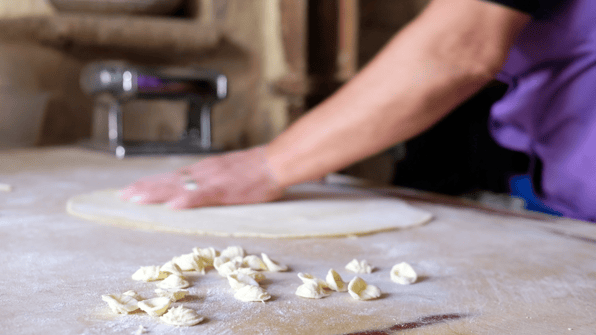
Smooth on the outside, the wrinkles on the insides allow the pasta to collect sauce. This can be a ragout, cream-based sauce, ricotta, or simple tomato sauce. The classic way of eating orecchiette is with turnip tops, which collects all the rustic beauty of the Apulian countryside into one dish.
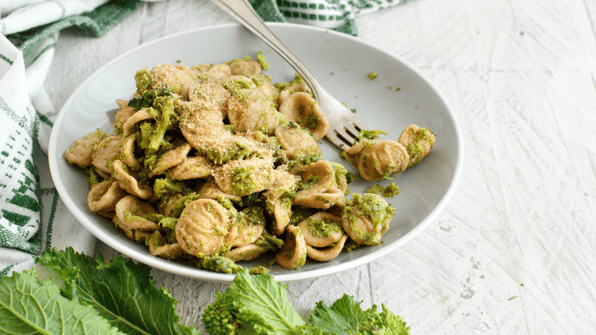
Since 1978, the Sagra ti li Stacchioddi in Latiano has celebrated orecchiette at an annual festival. The culinary traditions of the region are shared with locals and visitors, along with glasses of good wine.
The humble orecchiette, passed down and perfected through generations, continues to delight, whether served with a rabbit ragout or fresh greens from the surrounding fields. The passion and traditions of the Apulian people can be savored in each heavenly bite.
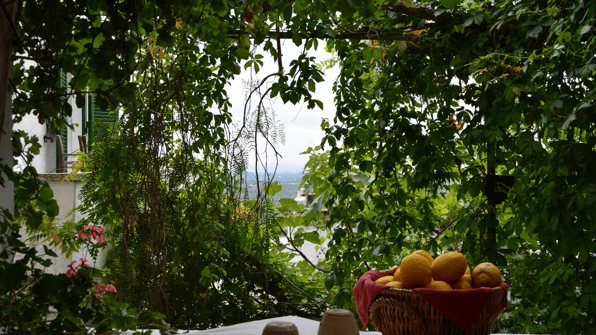
Would you like to discover the wonders of Apulia? Then we have the perfect trip for you:

